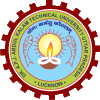Raj Chaudhari
The work discusses a setup where two feeder lines are connected to a point of common coupling (PCC) bus and a voltage source. Feeder line 2 incorporates a DVR and a three-phase programmable voltage source to supply power to a non-linear load, while feeder line 1 only has a resistive load. And feeder two is connected to non-
linear load. Power quality issues such as voltage sag, swell, Interruption, and Harmonic generation are achieved through three phases Programmable voltage source connected to feeder line two.
Palak Maurya
Modern devices may provide a pleasant atmosphere for residents while using minimal power is included in smart buildings. Most electrical power consumption maintains the desired comfort in the domestic building. Three key factors that affect indoor comfort are temperature, light, and indoor air quality. We need such an energy management system whose efficiency is maximum. The technique strives to achieve the ideal values for the three parameters.
Ashish Kumar Rao (PhD/15/ECE/2051)
This thesis considers two practical constraints, CR node mobility and non-time-slotted primary user activity for the FD-CRN sensing performance evaluation. The Rayleigh and Nakagami-m distributed fading channels are used to examine the sensing performance. The impact of channel estimation error and RSI on the sensing performance is also studied.
In the thesis, the analysis of non-time-slotted primary activity with CR mobility under the Rayleigh fading environment for FD-CRN is reported. The expressions of the detection and false alarm probabilities are derived considering ED.

